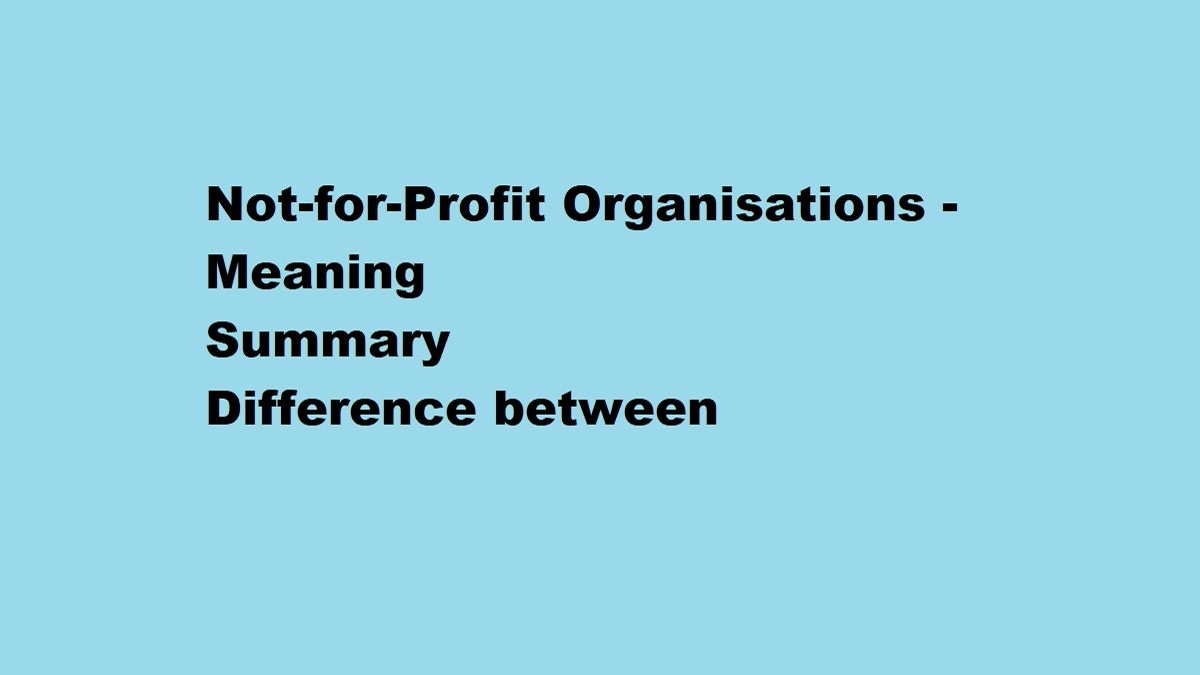Not-for-Profit Organisations – Meaning
Not-for-profit organisations are entities established not to earn profits but to provide services to their members and the wider public. Examples include clubs, hospitals, libraries, schools, religious institutions, charitable organisations, and literary societies. The main objective of these organisations is to serve a particular social, cultural, or charitable purpose rather than to generate income for distribution among members.
Such organisations may provide various services:
- Clubs offer sports and recreational facilities.
- Hospitals provide medical services.
- Literary societies promote arts and culture.
- Associations may work to protect the rights of their members.
The primary sources of income for these organisations are membership subscriptions, donations, and grants. While they may sometimes engage in incidental trading activities to generate profit, any such profit is used to further the organisation’s goals rather than being distributed.
Summary
Not-for-profit organisations exist mainly to provide services, not to earn profits. Their income comes mainly from subscriptions, donations, and grants. Any incidental profit is used to support the organisation’s objectives. These organisations must maintain proper accounts for legal reasons and to ensure their income covers expenses. Instead of preparing a Trading and Profit and Loss Account, they prepare an Income and Expenditure Account, which serves a similar purpose in tracking financial performance.
The characteristics of Not-for-Profit Organisations from the provided data are:
- These organisations are set up to provide service to a specific group or the public at large, such as education, health care, sports, entertainment, etc. The main objective is to provide service either free of cost or at nominal rates and not to earn profits.
- These organisations are set up as charitable trusts or societies, and subscribers to these organisations are called members.
The major sources of their income usually are:
(a) Subscription from their members
(b) Donations
(c) Financial assistance from Government in the form of grant-in-aid
(d) Income from investments, etc.
- The fund raised by these organisations from different sources are credited to capital fund or general fund.
- These organisations are usually managed by a managing or executive committee elected by the members.
- The surplus, if any, is not distributed among the members but is used for the furtherance of the objectives of the organisation.
- They prepare their financial statements at the end of each accounting period (usually a financial year) in the form of Receipts and Payments Account, Income and Expenditure Account, and a Balance Sheet.
Here is the difference between Not-for-Profit Organisation and Profit Earning Organisation or Business Firm:
- Primary Motive: The primary motive of a Not-for-Profit Organisation is to provide service, whereas the primary motive of a Profit Earning Organisation or Business Firm is to earn profits.
- Capital vs. Capital Fund: Not-for-Profit Organisations do not maintain any Capital Account; instead, they maintain a ‘Capital Fund’ comprising life membership fees, legacies, surpluses, etc., whereas Profit Earning Organisations maintain a Capital Account.
- Financial Statements: The financial statements of Not-for-Profit Organisations include Receipts and Payments Account, Income and Expenditure Account, and Balance Sheet, whereas the financial statements of Profit Earning Organisations include Manufacturing Account, Trading Account, Profit & Loss Account, and Balance Sheet.
- Surplus vs. Profit: The net result shown by the Income and Expenditure Account of a Not-for-Profit Organisation is either Surplus or Deficit, whereas the net result shown by the Profit & Loss Account of a Profit Earning Organisation is either Net Profit or Net Loss.
🔗 Stay connected with Management Plus for other Article

